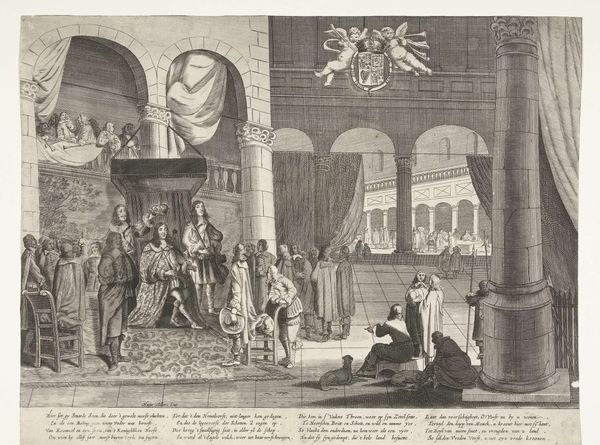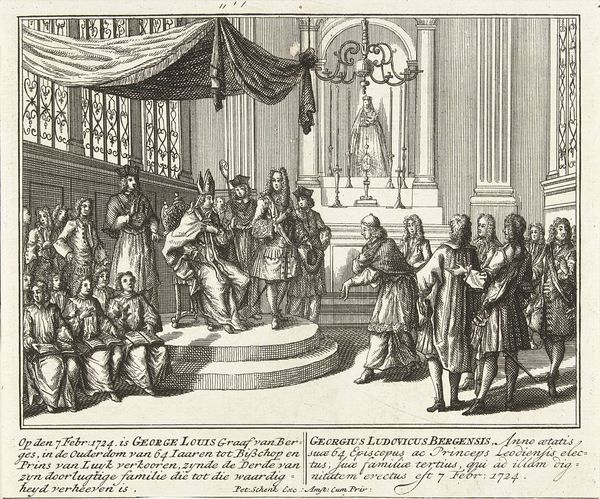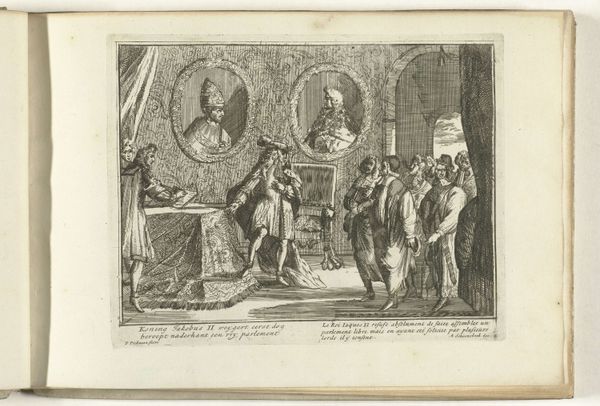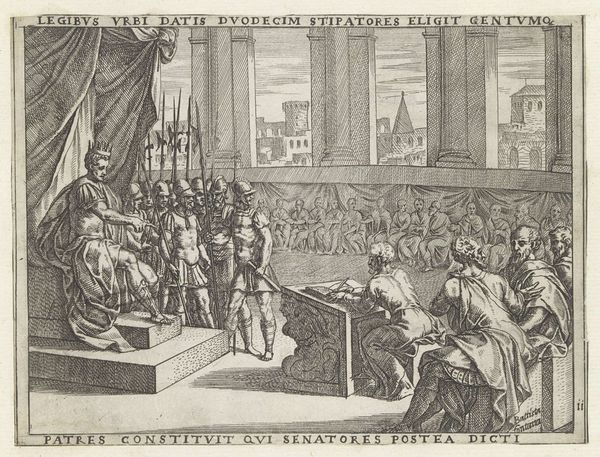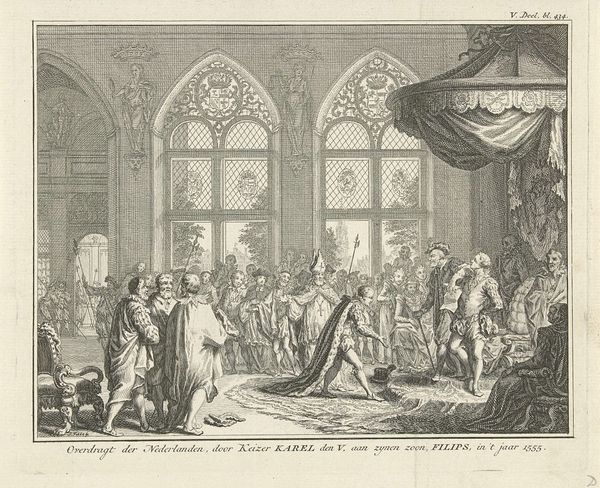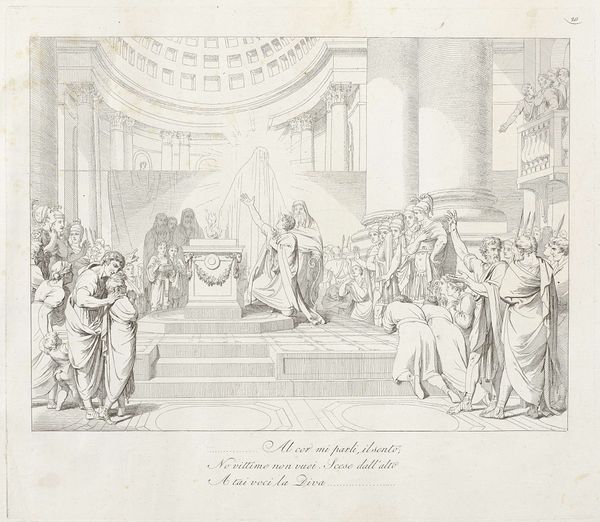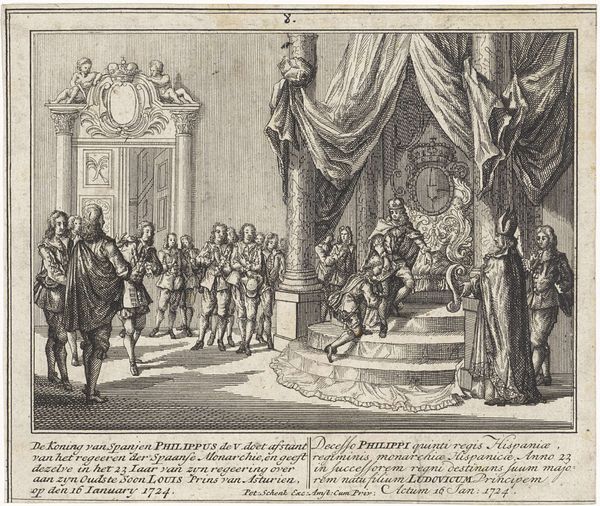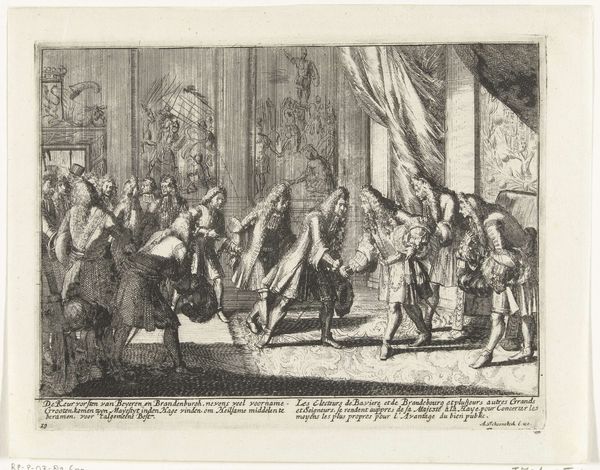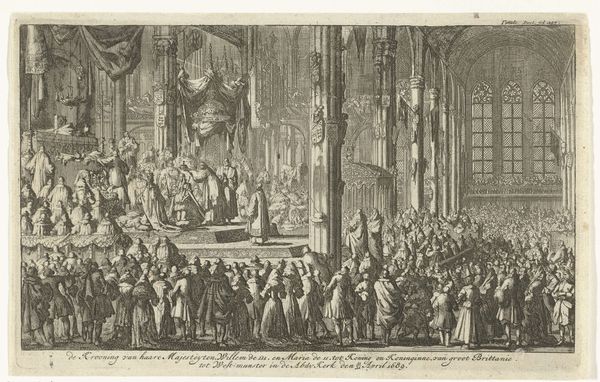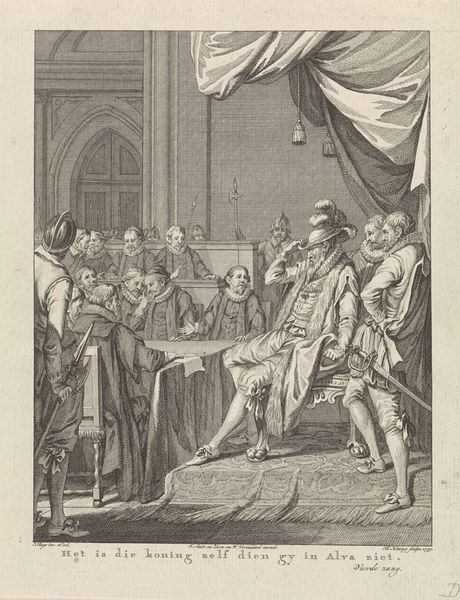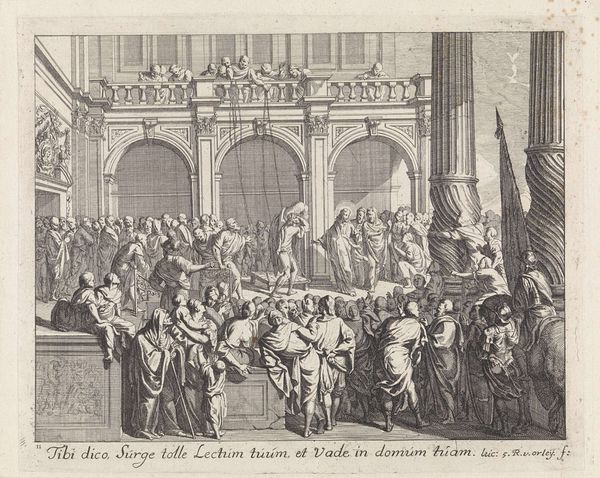
print, engraving
#
narrative-art
#
baroque
# print
#
old engraving style
#
traditional media
#
perspective
#
figuration
#
19th century
#
line
#
cityscape
#
history-painting
#
engraving
Dimensions: height 388 mm, width 502 mm
Copyright: Rijks Museum: Open Domain
Curator: What strikes me immediately is the spatial composition; the artist's use of receding planes really pulls the eye back. Editor: It is indeed striking. Today we’re looking at the “Vrede van Westminster, 15 april 1654,” an engraving created in 1654, now residing in the Rijksmuseum. I find myself drawn to the people populating this print; their poses and expressions tell of social hierarchies. Curator: Certainly, and within that hierarchical framework, note the sophisticated rendering of depth achieved through linear perspective and the placement of figures within these structured planes. The very sharp lines and contrast help enhance legibility. Editor: Absolutely, we should address that the print commemorates the Treaty of Westminster, marking the end of the First Anglo-Dutch War. See how it stages diplomacy but is equally concerned with establishing Dutch sovereignty through this moment. The architecture serves as a visual signifier of power. Curator: Precisely. It creates a symbolic space that frames the treaty signing. The building, perhaps signifying the importance of governance and law, is clearly defined through meticulous detail in its architectural elements, lending to its symbolic strength. Editor: Consider how such depictions legitimized Dutch authority, reflecting a wider context of national identity formation. It is all so intertwined: geopolitics, national ambition and symbolic self-fashioning. Curator: Indeed, from a formal perspective, one must admire the printmaker's command over line and form, turning what could be a static historical record into something dynamic and spatially interesting. Editor: Agreed. Understanding this print requires that we recognize its function within the Dutch Republic's broader project of self-definition and asserting its place on the world stage through political means. Curator: Seeing the clarity of line, it is so precise; one must truly appreciate the skill involved to translate complex concepts and spatial relationships. Editor: And I leave considering how carefully mediated representations like these shaped not only historical memory, but also geopolitical power.
Comments
No comments
Be the first to comment and join the conversation on the ultimate creative platform.
